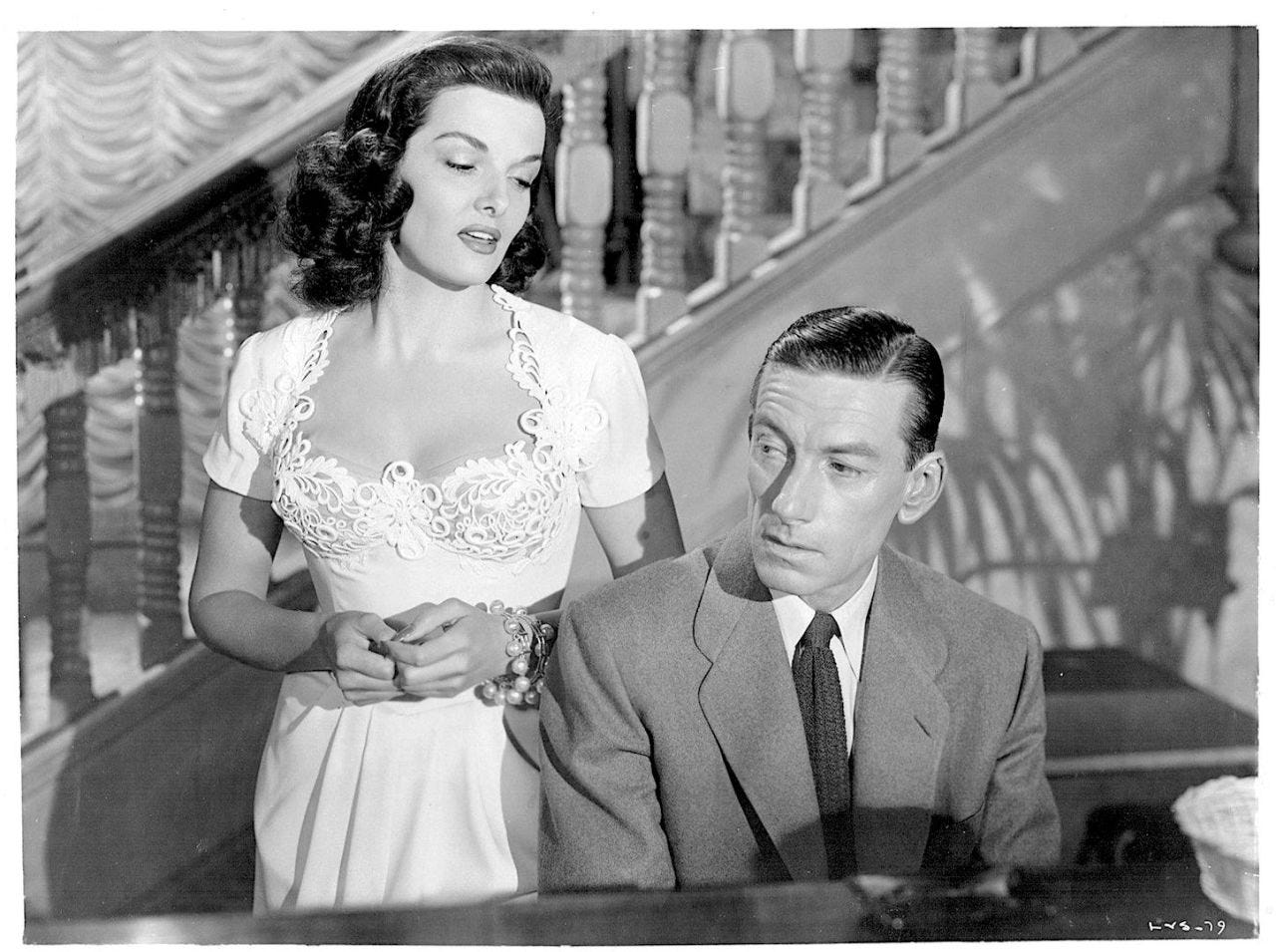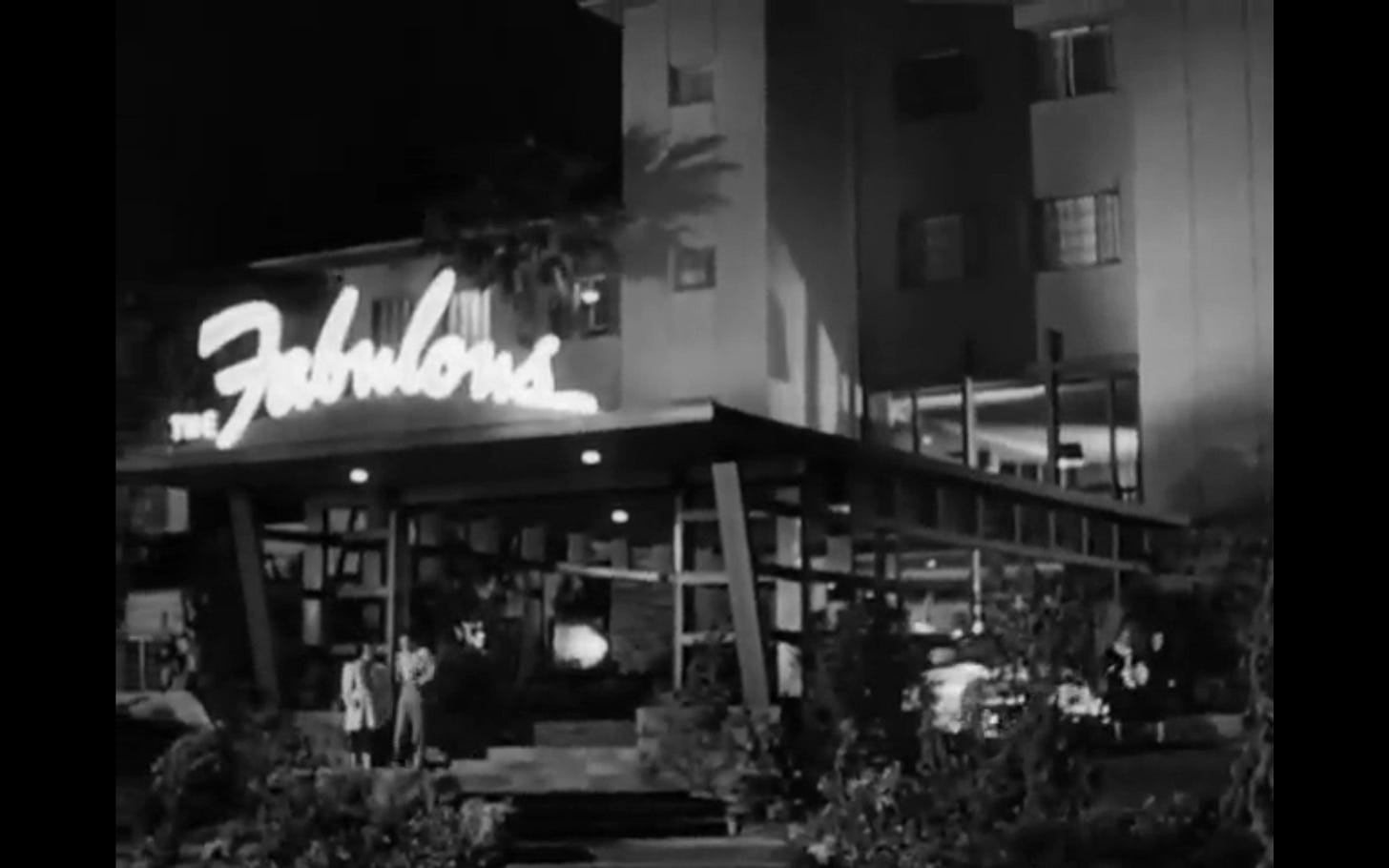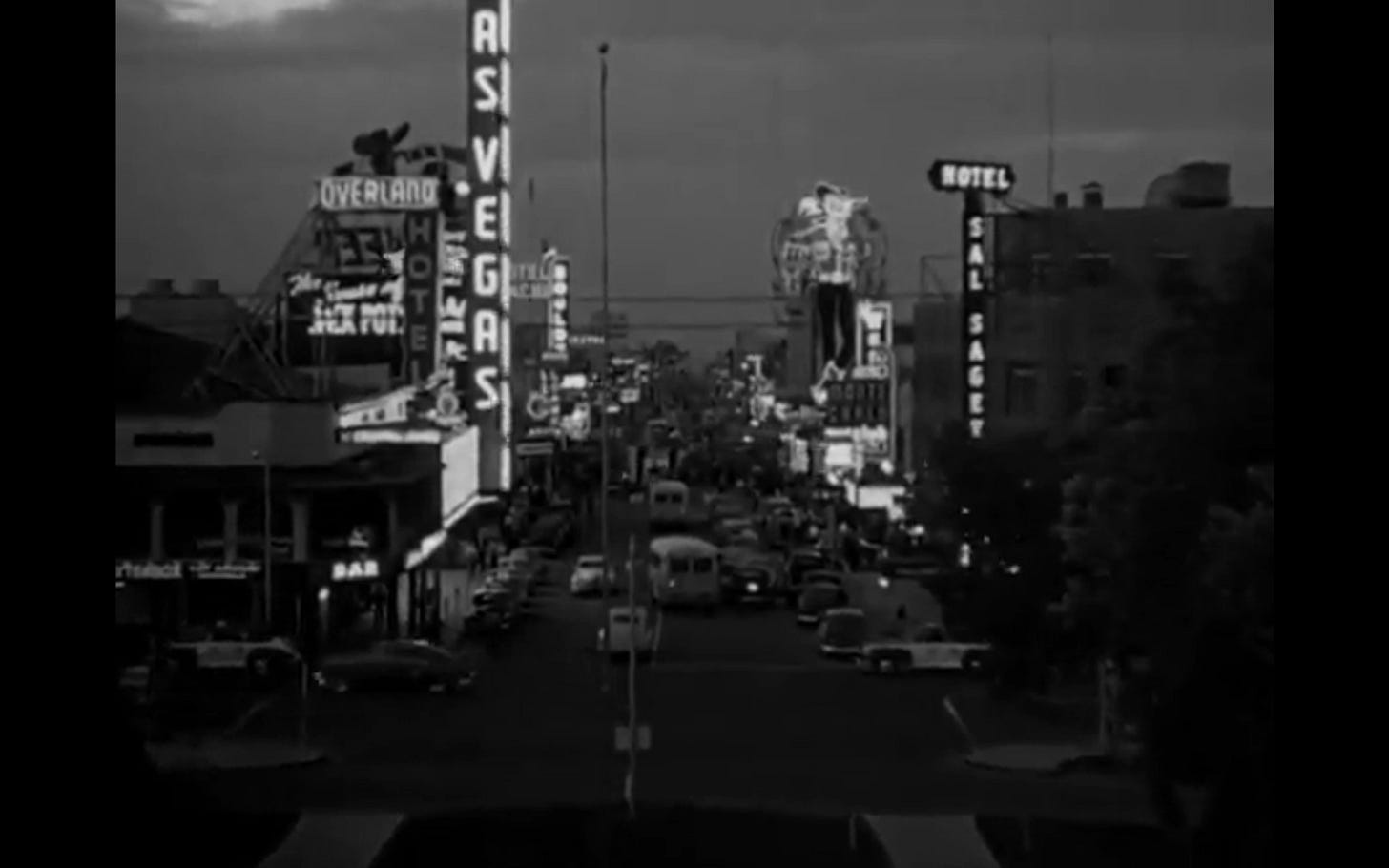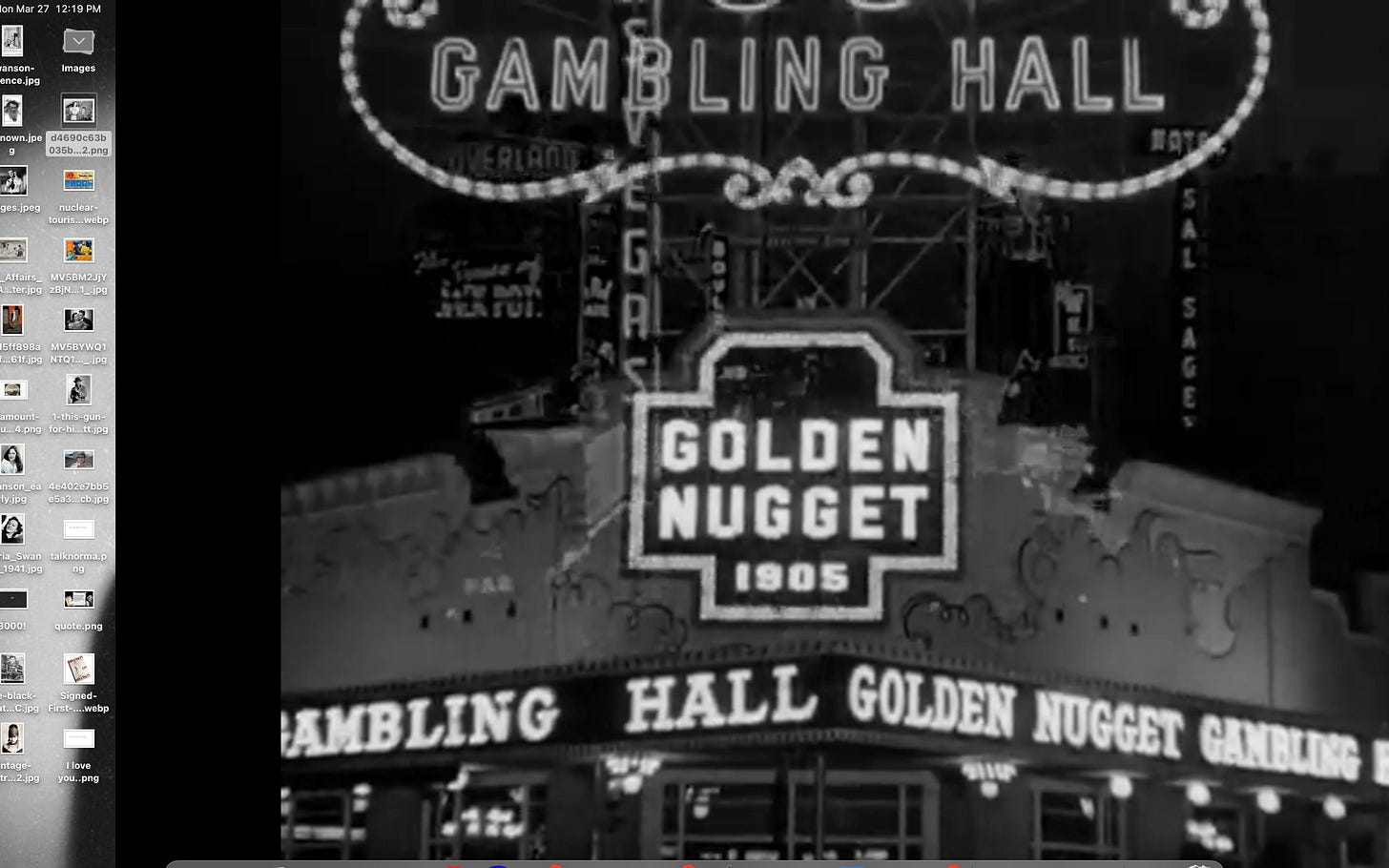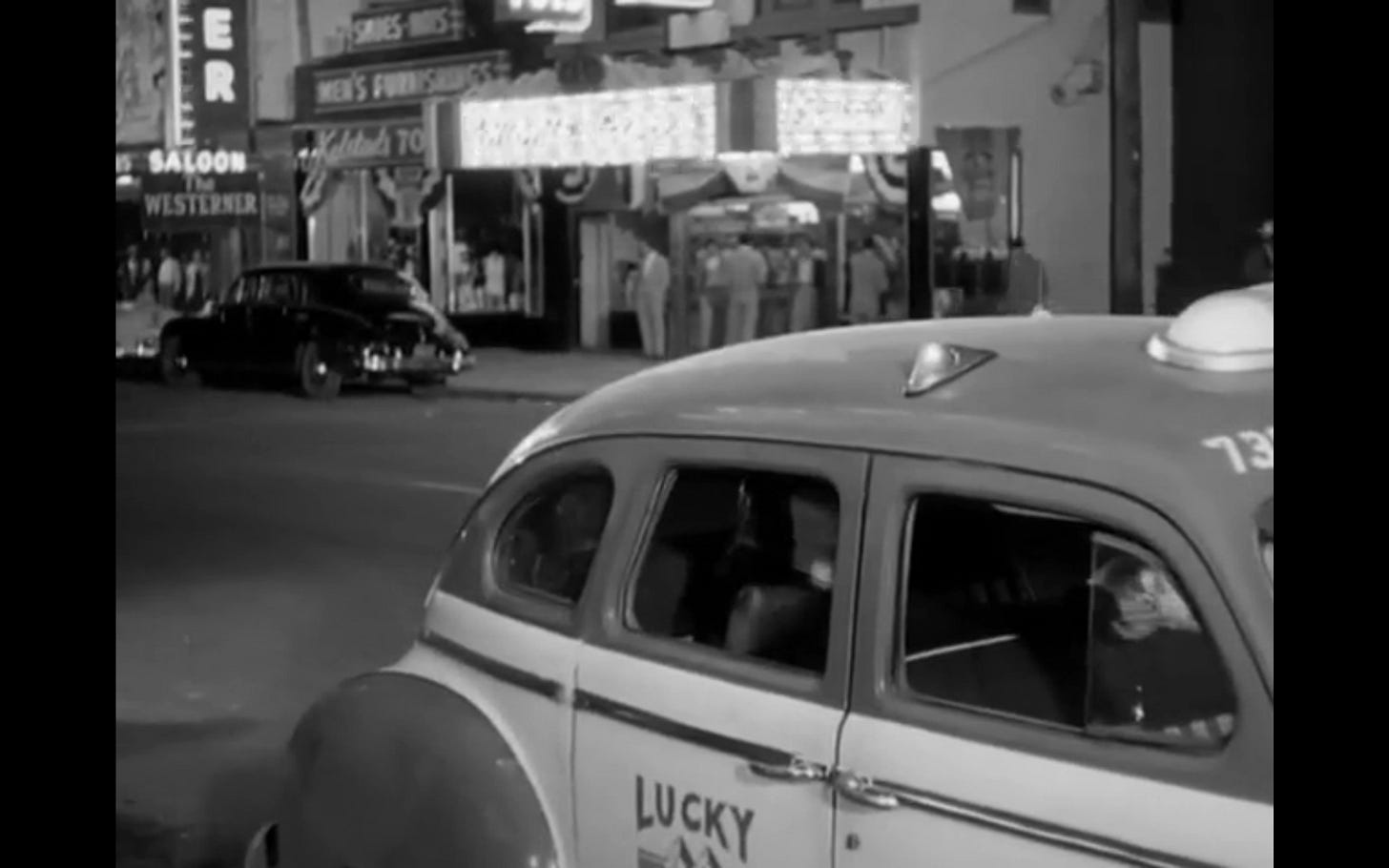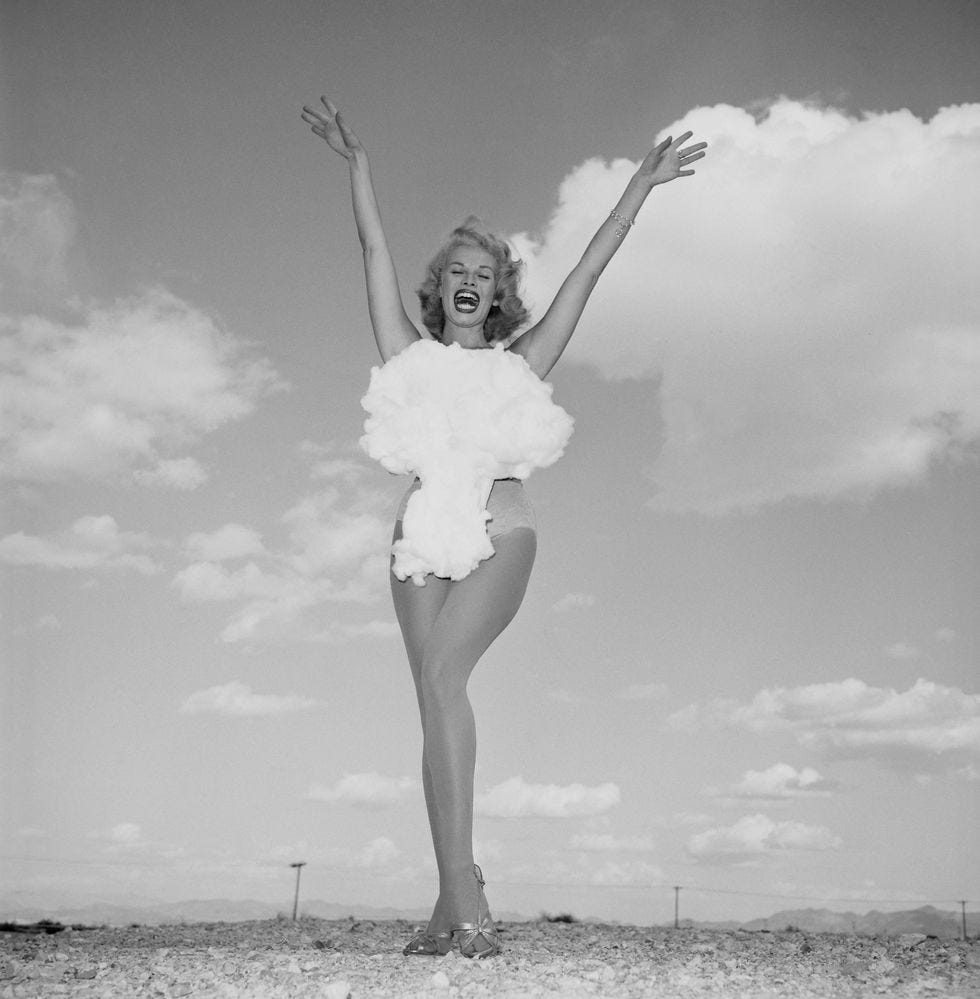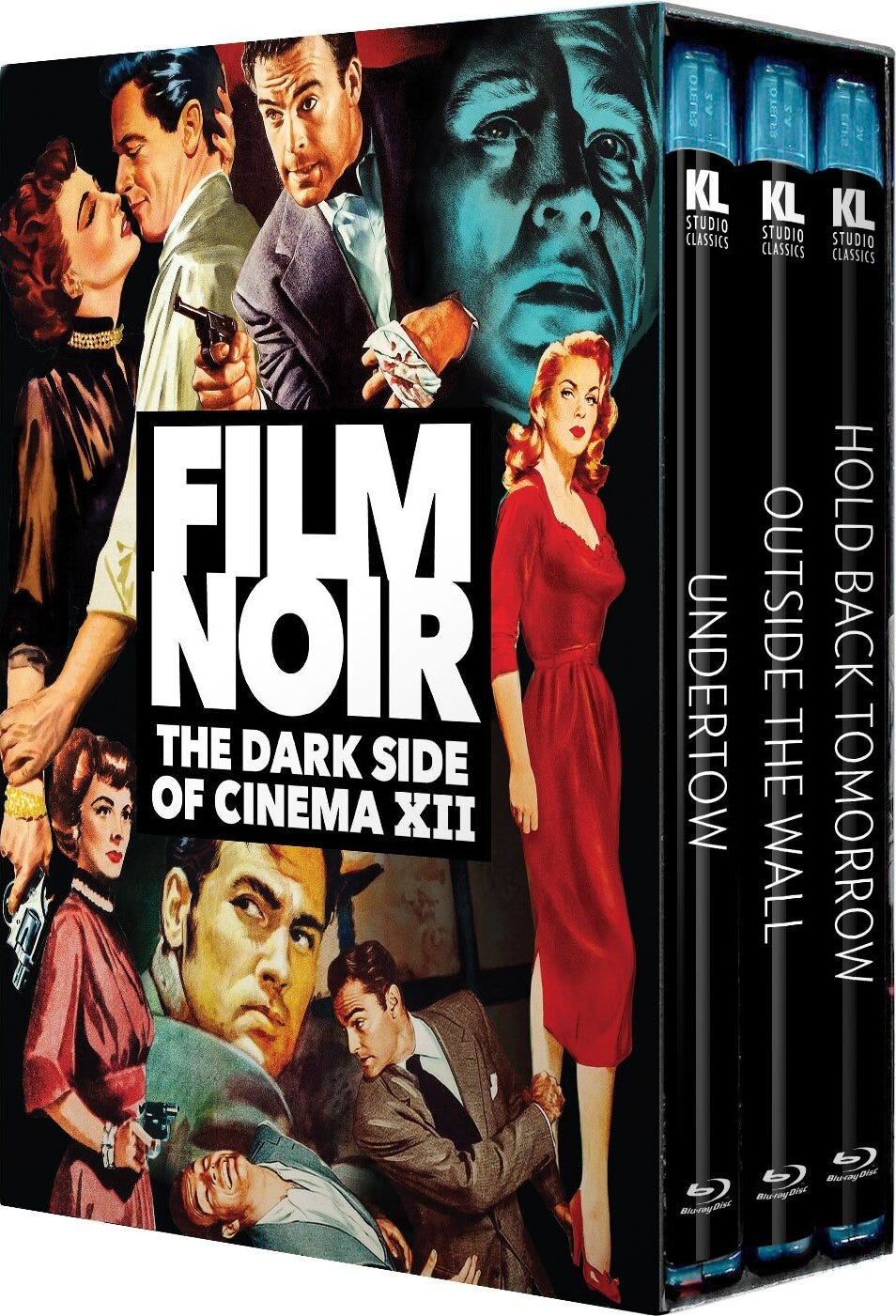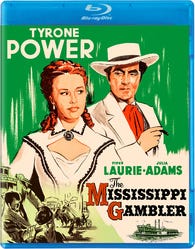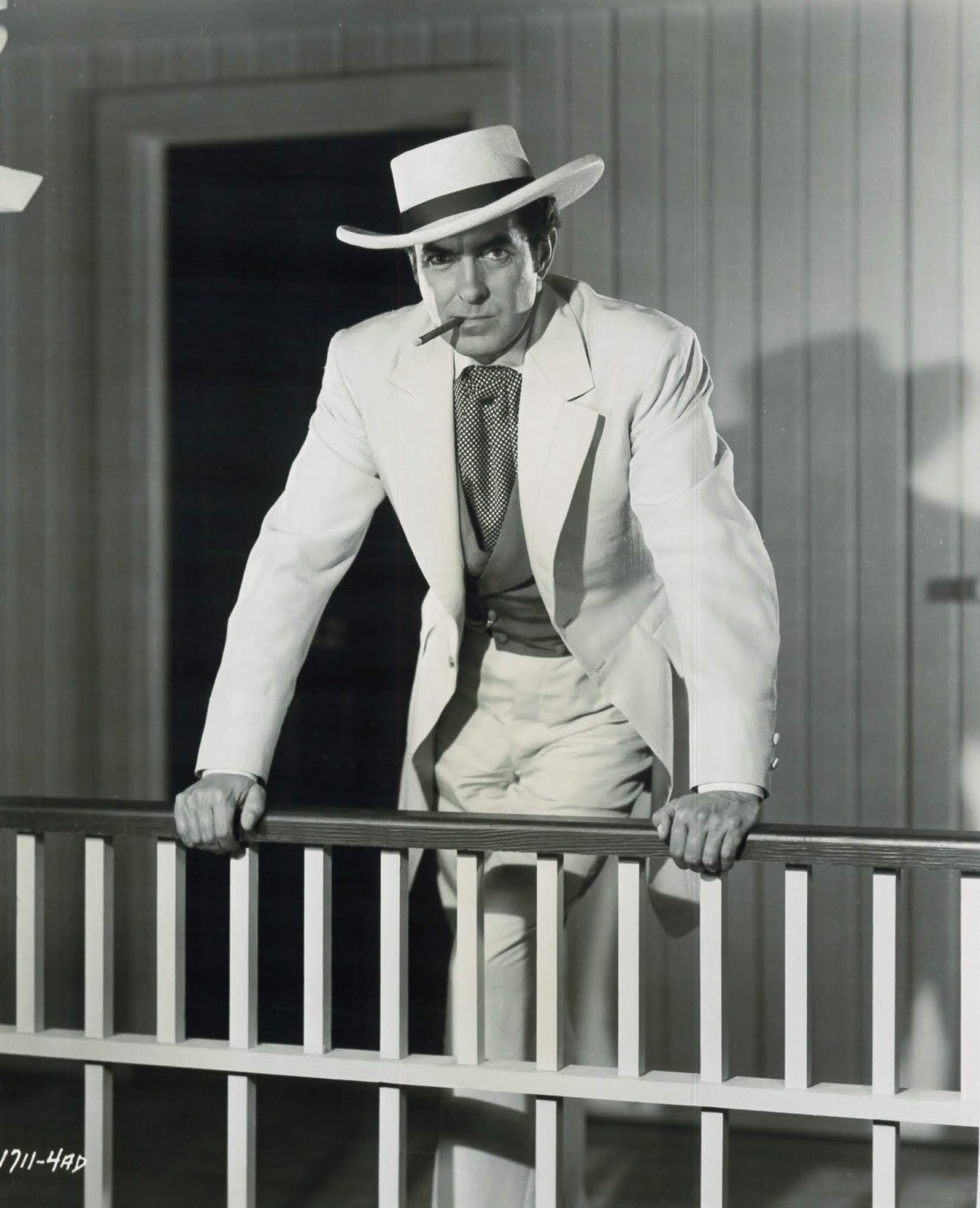THE SCREEN SPECTATOR - APRIL 2023
The Las Vegas Story: The not quite next “Casablanca.”
We’ll always have VEGAS . . .
Released in 1952 and directed by Robert Stevenson (Jane Eyre, The Strange Woman, My Forbidden Past), The Las Vegas Story is perhaps best known by film buffs today for the battle between the Screen Writers Guild and Howard Hughes, who refused to credit screenwriter Paul Jarrico because of Jarrico’s alleged communist ties. Hughes, a staunch anti-communist, purged the RKO talent pool and RKO film credits of any and all suspected communists during the red scare of the 1950s.
But, the film is also an interesting manifestation of Hughes’ continued desire to make his own cinematic masterpiece. The plot of The Las Vegas Story revolves around Linda Rollins (played by Jane Russell) and Dave Andrews (played by Victor Mature), former lovers who reunite in Sin City. We don't know what broke them up years ago, and they've since gone their separate ways. Linda's new husband, Lloyd (played by Vincent Price), doesn't quite measure up to Dave, and he is involved in some shady dealings. In fact, they are so shady that Dave, now a lieutenant with the Las Vegas Sheriff's Department, has to get involved, which brings him back into Linda's orbit.
Honestly, the plot is wild and a bit convoluted, and the characters are pretty lightly sketched. What makes this movie worth watching is the setting. Shot on location with cinematography by Harry J. Wild (Pitfall, The Big Steal, Gentlemen Prefer Blondes), the film documents a wildly different Vegas that is a far cry from the theme park style tourist mecca we know today. This is a Las Vegas that still feels rural and a little bit wild in the western sense of the word.
The Las Vegas Story was originally conceived as The Miami Story and planned as RKO's own version of Casablanca, starring Robert Ryan in a thrilling tale of love, intrigue, and sacrifice. However, Howard Hughes, the billionaire businessman, aviator, playboy and film producer, changed the setting to Las Vegas (he personally liked Las Vegas more than Miami) and cast Jane Russell and Victor Mature as the leads.
As with all Hughes productions, he was heavily involved in everything from costumes to securing a pivotal Cartier necklace, while striving to make a romantic masterpiece that would also showcase Las Vegas as a fun and exciting travel destination. The film even features a piano player named Happy, played by Hoagy Carmichael, who knows the lead characters' song and plays it…again….and again…( a la Casablanca)
However, despite Hughes' ambitions, the movie itself falls short of its great expectations. Its big budget can not save it from its flaws, the characters are flat, the plot is convoluted and its silly. But, if you're interested in the history of Las Vegas, it's definitely worth a watch. All the exterior hotel shots were filmed at the ‘Flamingo,’ Bugsy Siegel's famous hotel and casino. The production changed the name and the sign on the back of the building to read 'The Fabulous.' The rest of the location shooting involved the 1950s Las Vegas strip, Hoover dam, and the Mojave airport.
Released just a few months after the first atomic bomb was detonated on US soil, an event that sparked what was known as "atomic fever.” The film was able to capitalize on Las Vegas becoming the epicenter of the atomic craze. The mushroom cloud associated with the bomb became an icon for the city, adorning postcards, candy, toys, and even showgirls' headdresses. So when The Las Vegas Story hit theaters, it was riding the wave of this atomic craze.
In the end, The Las Vegas Story did not live up to its atomic hype. It was a box office bomb, and it lost RKO six hundred thousand dollars.
Frenemy of the channel, Bowsley Crowther, writing in the New York Times gave it a less-than-glowing review of The Las Vegas Story. He said, "The Las Vegas Story is one of those jukebox gambling films that gives the impression of being made up as it goes along ..."
I am particularly fond of this review from the March, 1952 Harvard Crimson:
“Howard Hughes' latest effort, The Las Vegas Story, has the same old Hughesian ingredients: Jane Russell's bust, Vincent Price's portrayal of a rich degenerate, a luxurious locale. (The Fabulous Hotel in Las Vegas), and a spectacular chase sequence near the finish. Only this time Victor Mature (not Robert Mitchum) plays the hero, and Hoagy Carmichael has been thrown in for kicks too, along with an incredible diamond necklace rented from Cartier, Inc. The result, as usual, is a preposterously silly picture.” (you read the entire review here)
However, despite the critical roasting, the film remains a visual document of a long-vanished Las Vegas. If nothing else, it offers us a chance to see what a wildly western Las Vegas looked like before it became the 'what happens here stays here' casino Disneyland.
You can watch THE LAS VEGAS STORY here.
Upcoming DVD/BLURAY Releases
FILM NOIR: THE DARK SIDE OF CINEMA XII
(KINO LORBER) April 4, 2023
Undertow (1949)
William Castle turns his lens on guns and gangsters for the film noir Undertow. Scott Brady (I Was a Shoplifter) stars as Tony Reagan, a gambler just out of wartime military service. No longer interested in wagers and speculations, Reagan wants only to open up a mountain vacation lodge. Before this can take place, however, he is framed for murder and forced to go on the run from both the police and the unknown killers. Dorothy Hart (Larceny) and Peggy Dow (Shakedown) play the love interests in this serpentine tale of mob-and-moll double-crosses, with John Russell (Yellow Sky), Bruce Bennett (Mildred Pierce) and future star Rock Hudson in his second film appearance.
Special Features and Technical Specs:
NEW 2K RESTORATION OF THE FILM
NEW Audio commentary by Scott Brady's Son Tim Tierney and Professor/Film Scholar Jason A. Ney
Optional English SDH subtitles for the main feature
Outside the Law (1950)
Richard Basehart stars as Larry Nelson, paroled from prison after serving nearly half of his thirty-year sentence. Larry is determined to not fall into the clutches of the law again and takes a quiet job at a country sanitarium. There he meets and falls for a gold-digging nurse, Charlotte Maynard (Marilyn Maxwell), and he knows the only way to enter her web is to make a lot of fast money. So when Larry learns that the sanitarium is a front for a robbery syndicate, he soon finds himself a clay pigeon for the gang. Meanwhile, sweet-and-wholesome nurse Ann Taylor (Dorothy Hart, Undertow) does her best to help Larry out of the unpleasant situation.
Special Features and Technical Specs:
NEW 2K RESTORATION OF THE FILM
NEW Audio Commentary by Author/Film Historian Alan K. Rode
Optional English SDH subtitles for the main feature
Hold Back Tomorrow (1955)
John Agar stars as Joe, a death row inmate with one final request before his impending hanging: to spend the night with a woman. The police bring him a down-on-her-luck former "waitress" named Dora, played by femme fatale extraordinaire Cleo Moore (On Dangerous Ground, The Other Woman). At first these two tormented souls meet with disdain, but soon gain each other's respect. After a night of raw and unexpected passion, Joe informs Dora that, with her love, he will not be afraid to die. The nihilistic noir two-hander Hold Back Tomorrow comes written, produced and directed by Hugo Haas.
Special Features and Technical Specs:
NEW 2K RESTORATION OF THE FILM
Theatrical Trailer (Newly Mastered in 2K)
Optional English SDH subtitles for the main feature
THE MISSISSIPPI GAMBLER
(KINO LOBER) April 14, 2023
This is a big deal for any Tyrone Power fan. The Mississippi Gambler is finally getting a BLU-RAY release! I’ve already pre-ordered my copy.
This is pure romantic melodrama. In a nutshell, Ty plays a professional gambler who travels along the Mississippi River, looking for high-stakes games. He’s spurned by Piper Laurie. So, since success is the best revenge, he opens a casino (as one does, naturally…) and makes a TON of money.
This one is jam-packed with drama. It’s got everything: crooked card games, sword fights, fist fights, murder, embezzlement, unrequited love, and Ty Power in saucy chapeaux. . .
Special Features Include:
• Brand New 2K Master
• NEW Audio Commentary by Film Historian Toby Roan
• Theatrical Trailer (Newly Mastered in 2K)
• Optional English Subtitles
Norma Desmond: Diva Behavior
One of the best things about having this newsletter is that I can make fun little videos like this to share with you, and I don't have to worry about the YouTube algorithm.
THE BEST OF MARCH: Some of the best of what I watched, read and listened to last month. . .
FILM
LE SAMOURAI (1967)
Starring Alain Delon, Nathalie Delon, Cathy Rosier Dir. John-Pierre Melville
I have watched Le Samourai three times this month, and I can't help but be struck by how aggressively silent it is. It's a film that relies heavily on expressions and actions, with very little dialogue. Director Jean-Pierre Melville crafts a masterpiece that explores the theme of existential loneliness through the character of Jeff Costello (Alain Delon), a hired hitman who lives a solitary life with no close relationships. Jeff is disconnected from the world around him, and the film's minimal dialogue and sparse use of music contribute to a sense of isolation and emptiness.
There is also a pervasive feeling of foreboding throughout the film, which is central to its noir aesthetic. From the very beginning, there is a sense that something is off, that danger is lurking around every corner. This feeling of danger is embodied by Jeff himself.
I must warn you, if you’ve never seen an Alain Delon film, prepare to be amazed. He is captivating, raw and magnetic. (also watch Purple Noon and La Piscine)
And once you hear the theme to Le Samourai, a hauntingly eerie and minimalist tune, you'll never get it out of your head.
LET THERE BE LIGHT (1946)
Directed by John Huston and commissioned by the US Army to capture the treatment of soldiers with psychological trauma during World War II, Let There Be Light follows a group of soldiers diagnosed with various mental health conditions, including post-traumatic stress disorder, and documents their treatment and recovery process.
The film features interviews with soldiers and footage of group therapy sessions, hypnosis, and other treatment methods. It also explores the social stigma surrounding mental illness and the challenges that soldiers face when reintegrating into society after returning from war.
It's unfortunate that the film, which offers a realistic and compassionate portrayal of mental health issues among soldiers, was classified as confidential by the US Army and not publicly screened until the 1980s. The stories of the men who fought in the war depicted in the film could have been a source of comfort for returning soldiers who felt isolated, as it showed them that they were not alone in their struggles.
Let There Be Light is an important and poignant exploration of the psychological toll of war on soldiers, revealing the mental and emotional scars that many of them carry long after leaving the battlefield.
ARTICLE
The Actor’s Letter
From: THE CHICAGO READER OCTOBER 29, 2009
A reminiscence from film noir icon Robert Ryan, unearthed by his daughter, sheds light on his Chicago childhood—and his family’s connection to a tragic chapter in the city’s history.
Ed Lachman in Conversation
One of my favorite cinematographers is Edward Lachmann. His work with Todd Haynes (Carol, Far From Heaven, Mildred Pierce) is constantly complex, evocative and beautiful. But, his filmography also includes films as diverse as Desperately Seeking Susan, Less Than Zero and Mississippi Masala. This interview featured on the METROGRAPH is in-depth, wide ranging and fascinating.
you can read the interview here
Another side of Gloria. . .
One of the most interesting bits of information I learned after my recent video about Gloria Swanson and Sunset Boulevard was that Gloria never wanted to be a movie star. She could take it or leave it, and what she really wanted to do was be a singer.
In the 1933 film Perfect Understanding, she gets the chance to show off her vocal chops by serenading a baby Laurence Olivier with the song, "I Love You So Much That I Hate You.”
and finally. . .
🎵Like the music featured in the videos on the channel?
you can find a playlist with the music I've used here: CINEMA CITIES PLAYLIST
(And, if you sign up to Epidemic Sound through the playlist link, you'll get 1 month for free!)
I hang out on Twitter so come on over and say hi!
If you're loving all the content, consider supporting the channel at buy me a coffee, or becoming a Sub Stack paid subscriber with access to even more content.
Email: CinemaCities1978@gmail.com







